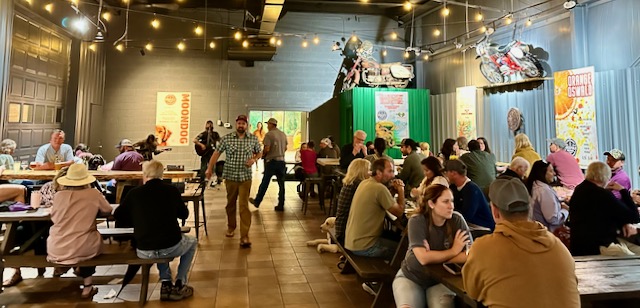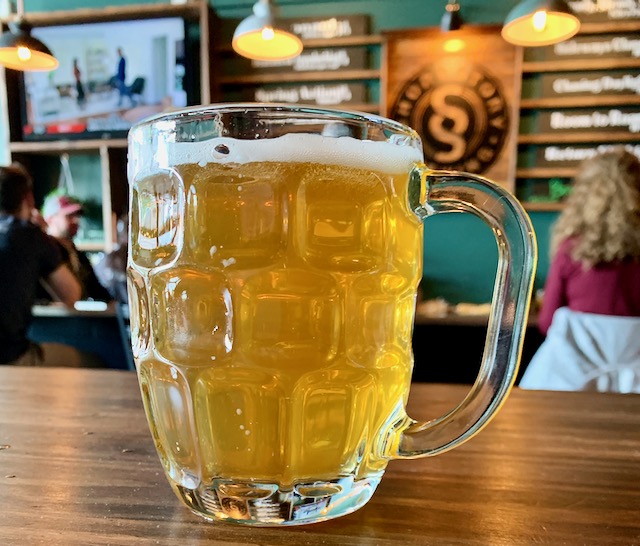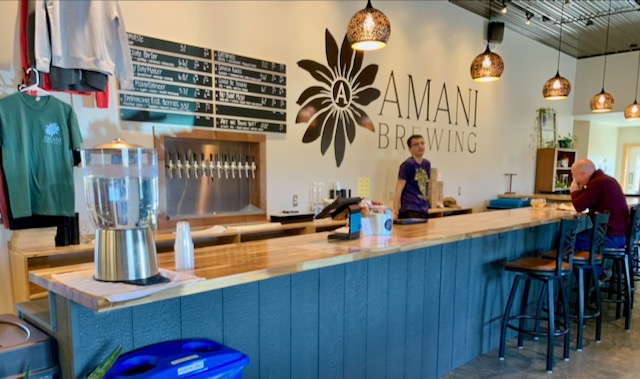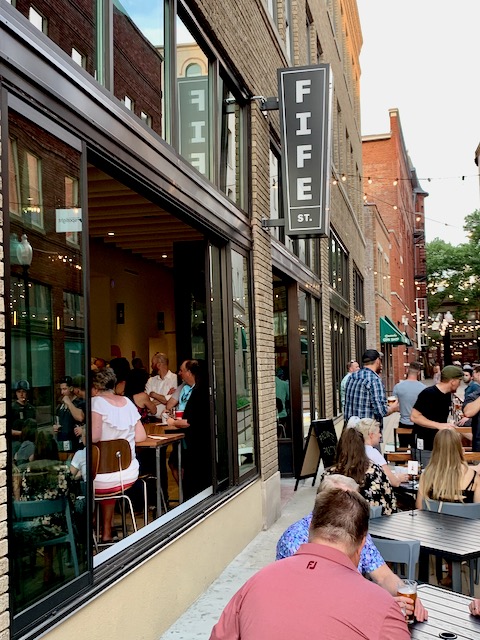
Welcome 2024, the year of remote taprooms
January 2, 2024
Hopefully, the end of 2023 closed a turbulent chapter in the national craft beer industry. Can we predict 2024 will be a year when the craft beer industry finds its new normal? We hope so.
And if there is one trend that will become the new normal, it is the growth of remote brewery taprooms.

Troubles were brewing
Over the last 10 years, the rapid expansion in the number of craft beer brewers led to some market discombobulation in the industry. And that is especially true on the distribution side. There just has not been enough growth in retail shelf and cold box space or growth in on-premise tap handles to accommodate all the growth in craft breweries needing to distribute their beer. It really showed up in the market last year.
Many major national and large regional craft brewers lost sales and market share. A significant increase in small brewery closings hit pretty much every state.
Craft beer sales became more competitive. With market demand leveling off, there just isn’t enough consumer demand to purchase all the growing amount of craft beer entering the market. Numerous less efficient breweries, both smaller and larger, gave up the ghost in 2023. National craft beer industry trend watchers seem to think we may not quite yet be totally through this necessary market correction.
At Brilliant Stream we think the West Virginia market is probably better off than the overall U.S. market due to WV having never fully participated in the big, overheated craft beer frenzy that the major urban markets experienced over the past decade.
We’re taking our hits
That is not to say WV is escaping unscathed. In 2023, West Virginia saw 12 percent of the state’s craft breweries cease brewing versus only one new one open. The brewing stopped at Wheeling Brewing, Big Draft Brewing in White Sulphur Springs, Dobra Zupas in Beckley, and The Rambling Root in Fairmont. Most if not all of them are likely permanently closed.

We also saw West Virginia’s second largest brewery shut down (Greenbrier Valley Brewing) and then, thankfully, get its ship righted a few months later with a new owner. One of those breweries that quit brewing in 2023 had been around for 10 years (Wheeling Brewing) and one represented a more recent, major investment (Big Draft).
Overall, selling craft beer became a tougher business in 2023. Because West Virginia had never fully joined in the overheated craft brewery climate as in more urban American markets, it likely does not have the over capacity in local brewing that many other regions may have had. That being said, right-sizing to the current craft market demand will continue to be important to every small brewery’s overall profitability.
Still, 2023 was the state’s most turbulent year for small brewers in recent history. However, we think things will settle down in 2024.
The greatest brewery opportunity
While West Virginia definitely still has some room to grow, growing craft beer’s market share will be a slow process.
No doubt, the greatest opportunity for growth is at the small end of the market: brewery taprooms. For craft beer lovers, these brewery taprooms are often preferred over the corner bar or nightclub.

While West Virginia’s local small breweries are not places that are likely grow to large proportions, they can still be quite profitable, and support a family, by producing and selling good beer over the bar at their own places (and maybe self-distributing to a handful of other bars and restaurants around their communities). Looking ahead, this is the business model where most of the growth in the number of actual craft breweries will come.
Seeking new locations
West Virginia still has numerous towns and cities with no craft brewery—or maybe only one when having two or three could make the business category more viable. There’s a belief in the craft industry that a city with two or more local craft brewery outlets will sell several times the amount of locally brewed beer that a town with only one brewery will. Our brewery entrepreneurs are slowly working to fill these voids.
Within the next few months we should see a new brewery with taproom open in Elkins (Fox Hops Brewery) and also in Barboursville (Koerber Beer Co.). We hear other folks are working on opening additional new small breweries in various WV towns/cities—Hinton. for example. We love seeing this, but there’s an even hotter side to the business model happening concurrently.
Hottest trend in small breweries
As WV state alcohol regulators loosen up their iron-hand grip on the local small brewing industry, we are seeing the development of second or third taprooms by our existing small brewers. These additional taprooms may be across town or in a totally different city from the original brewery taproom. This is an extremely positive business trend.

The trend fits right in with the beer consumer’s growing preference for drinking beer in a brewery’s own taproom. It also helps existing small brewers have consistent, reliable places to sell their beer while maintaining high margins (especially for those who can self-distribute).
For a number of years we’ve had Mountain State Brewing in Thomas participate in two remote taprooms through its like-named restaurants in Morgantown and Bridgeport. Charleston’s Bad Shepherd Beer Company has in essence had three remote taprooms through their family-owned restaurants and nightclub in Huntington.
Short Story Brewing, based in Rivesville, now has a very popular remote taproom in downtown Charleston, which opened in late 2022. Last summer, Stumptown Ales, which brews in Davis, opened a remote taproom in Fairmont, and The Freefolk Brewery opened a second taproom at Hico.
More on the way
We hear that Chestnut Brew Works is working on a second taproom in Morgantown and Weathered Ground Brewery has reportedly been out surveying the market in southern WV and considering development of its second taproom location. Amani Brewing in Martinsburg is also reported to be considering a second taproom location, probably on the eastern side of the state.

Looking further out
Now that Big Timber Brewing has opened its beautiful new taproom at their Elkins brewery, our guess is that they may consider, as a growth strategy, possible remote taproom locations in other parts of the state. Similarly, as its new owners get Greenbrier Brewing back on its feet, it wouldn’t surprise anyone if they opened a remote taproom in a town somewhere down the road. Following the strong success of Charleston’s Fife Street Brewing taproom, it is another good prospect for adding a remote taproom in another town.

While we may not see a ton of completely new breweries open in the next couple of years, we will very likely see more existing WV breweries opening second or third taproom locations. It just makes good business sense.
What is a remote taproom
A remote brewery taproom is a taproom that is owned and operated by a brewery (or by the brewery owners) at a different location from its physical brewery and is in addition to the taproom located at the brewery itself. Most often, the remote taproom carries the same name as the brewery. Often, but not always, the remote taproom exclusively features beers made by the owning brewery. This business model allows a small brewery to maximize its profit by selling glasses of beer directly to the consumer at full retail pint prices. This compares to the alternative model of having to greatly discount the price of a keg of its beer in order to sell it through a beer distributor. The brewery taproom business model makes it possible for small, local craft breweries to be profitable businesses and grow into larger businesses that benefit our communities with both employment and tax revenue.


2 comments on “Welcome 2024, the year of remote taprooms”
Amy Skeens
January 2, 2024 at 10:09 pmI’d love to see a Fife in the north!
Mark G
January 3, 2024 at 3:22 pmGreat article as always Charles! It sure would be nice to see a remote taproom in the Clarksburg area.